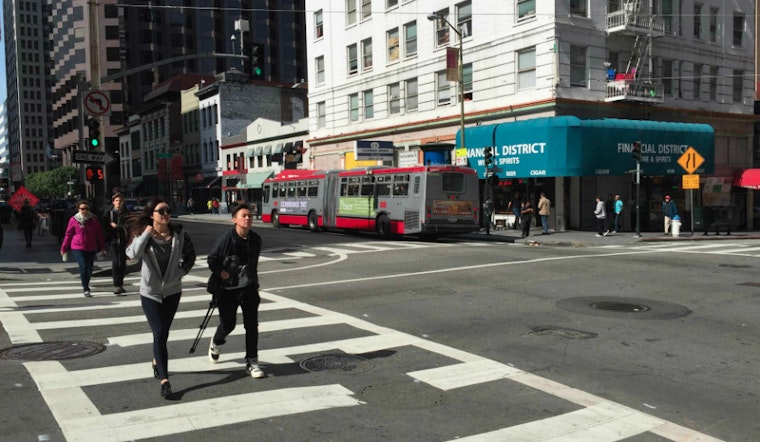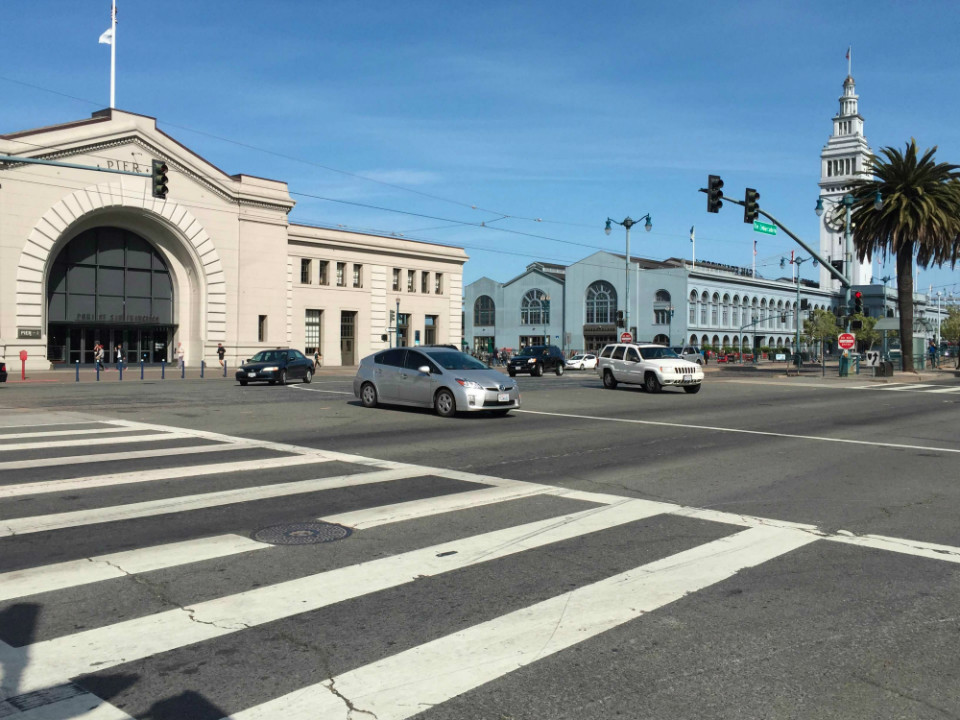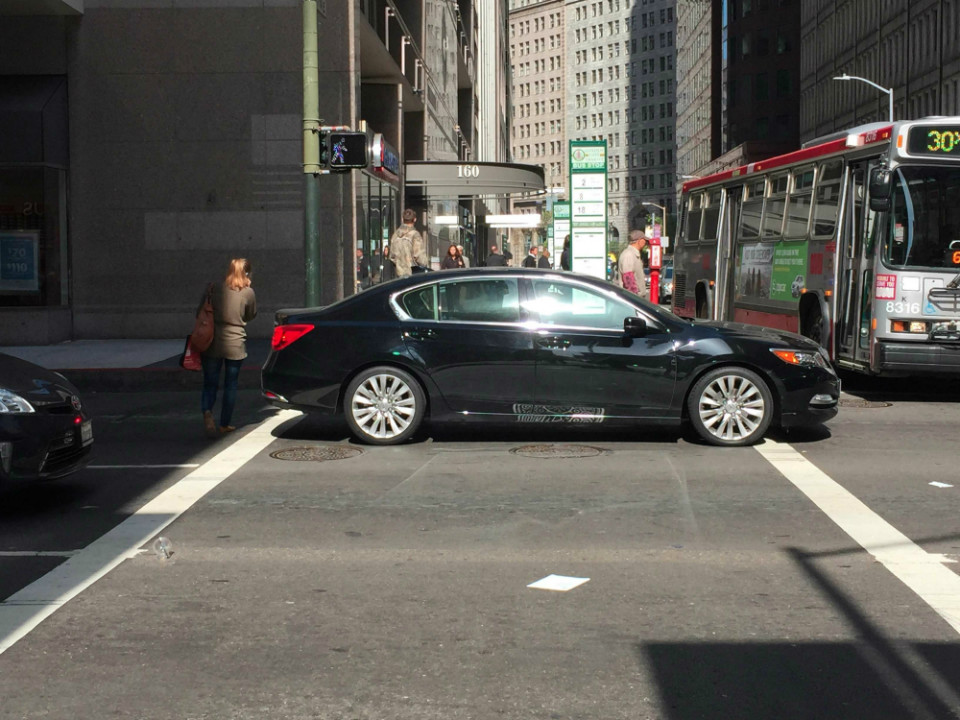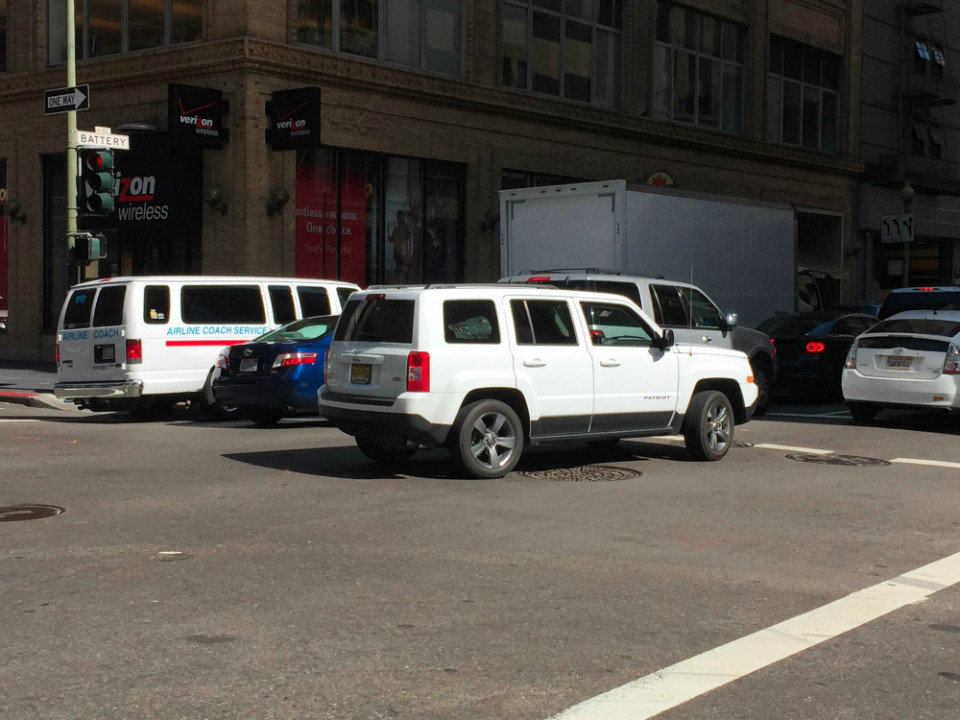
Overall traffic citations are on the rise across the city, but only half of the stations increased citations for the worst five offenses – including in the traffic-burdened Central District. That’s according to SFPD Traffic Company Commander Ann Mannix, who presented a breakdown of the latest Focus on the Five statistics to the Board of Supervisors' Land Use and Transportation Committee and Police Commission President Suzy Loftus at its regular meeting Monday afternoon.
Focus on the Five is a data-driven traffic enforcement strategy with the goal of issuing 50 percent of tickets for the five most common causes of traffic injuries: unsafe speed, unsafe turning, pedestrian right-of-way violations, red light running and unsafe starting or backing up. Central Station in 2014 only reached 12 percent, but officers there issued more than 10,000 citations total.
The "five" in Focus on the Five also refers to the five most dangerous corridors or intersections in each district. In Central, they are Pine/Battery, Geary/Jones, Stockton/Sacramento, Battery/California, Broadway/Powell, California/Hyde, Kearny/Bush and Embarcadero/Washington. The FiDi, with hundreds of thousands of workers coming in each day, and Chinatown, with its density of population and busy streets, are particularly dangerous. This map shows where pedestrians have been severely injured and killed.
"I put out a message to each captain that it’s a priority throughout the city to issue citations," Cmmdr. Mannix said at Monday's meeting. However, she added that when officers are out, they can't ignore other offenses that might not be in the Focus on the Five goals. "If we see a violation, no mater what it is, we’re going to pull someone over and cite for it," she said.
Captain David Lazar of SFPD Central Station said he's encouraging officers to issue more Focus on the Five citations and is reading daily, instead of monthly, recaps to stay apprised. His station, like all others now, conducts targeted stings using an officer in street clothes and cites drivers for failure to yield to pedestrians. A Central sting on May 6th cited 23 drivers in less than an hour.

Cars turning at the Embarcadero and Washington Street. Photo: Geri Koeppel/Hoodline
Still, Central's Focus on the Five citations were down 11 percent in the first quarter of 2015 compared to the same period of 2014, from 332 to 295. Southern was down 48 percent—the largest decrease of any station—from 418 to 218. The biggest percentage increase in citations was in the Tenderloin, with 80 percent more Focus on the Five citations in the first three months of 2015 compared to the same time frame in 2014 (302 versus 168).
“I am concerned about the reduction in citations given in Central and Southern," said District 6 Supervisor Jane Kim at Monday's meeting. "Those two precincts have a lot of the high-injury corridors.” She added she was "very sympathetic" that the police have a lot of other priorities, however. Cmmdr. Mannix earlier said the Richmond station captain, Simon Silverman, "has the luxury of dedicating officers just to do traffic,” unlike the captains of other stations.
Only one station—Richmond—met the Focus on the Five goal of issuing 50 percent of citations for the five most dangerous traffic behaviors in 2014, with 58 percent. Citywide, the rate was 24 percent in 2014, up from 23 percent in 2013. In the first quarter of 2015 compared to the first quarter of 2014, half of the stations had increased the number of Focus on the Five citations (Northern, Park, Richmond, Taraval and Tenderloin), while the others (Bayview, Central, Ingleside, Mission and Southern) saw citations decline. For those who are nuts about numbers, get all the figures in this PowerPoint.

Cars blocking crosswalks are common in the FiDi. Photo: Geri Koeppel/Hoodline
Nicole Ferrara, executive director of Walk San Francisco, said, "We need to see the worst traffic behaviors enforced to a greater extent than they are now. We’re working with those stations to find out why it’s not working so well and try to do what we can to encourage them to get those numbers up." It's all about cherry-picking: Ticket for the most dangerous driving behaviors in the most dangerous areas, and the idea is you'll greatly reduce—and hopefully eliminate—traffic deaths. It fits in with the city's Vision Zero plan to reach that goal by 2024. In 2014, the city saw 29 traffic fatalities, with 19 pedestrians, three bicyclists and seven people in vehicles killed. In the first quarter of 2015, there were four fatalities, down from nine the same period a year ago.
So is Focus on the Five improving safety? Ferrara said she thinks it’s still too soon to know because SFPD hasn't met the goals yet. "In terms of traffic enforcement, the numbers have definitely gone up," she said. "Almost anyone you ask, traffic enforcement barely existed in San Francisco a few years ago. Now it’s elevated in importance in the last year and we’ve seen the actual number of citations increase by about 50 percent."
Also at the meeting, the issue of better data collection and data sharing among departments was discussed. Epidemiologist Leilani Schwarcz of the Department of Public Health talked about an open source web-based portal to collect data called TransBaseSF.org. Camron Samii of SFMTA was also on hand to talk about giving tickets for "Don't Block the Box," the intersection gridlock that makes it difficult and dangerous for pedestrians to cross. After the presentation, several people took the podium during the public comment section to applaud the effort, ask for more details and offer suggestions on stepping up Focus on the Five enforcement.

Vehicles block the intersection of Battery and Pine streets. Photo: Geri Koeppel/Hoodline
Kim closed by saying she was looking forward to the open source system and working to collect data in a more timely manner. “I think we’re really happy to see a reduction in fatalities this year,” she said. "It’s really great we have such a cross-section of stakeholders."









